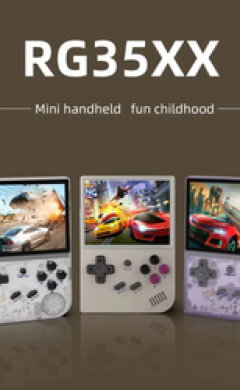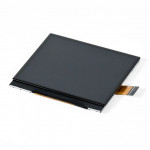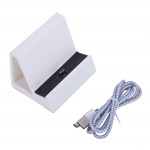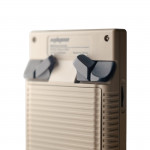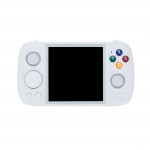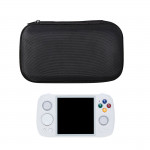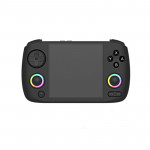Sync Saves for Retro Games on Android Guide
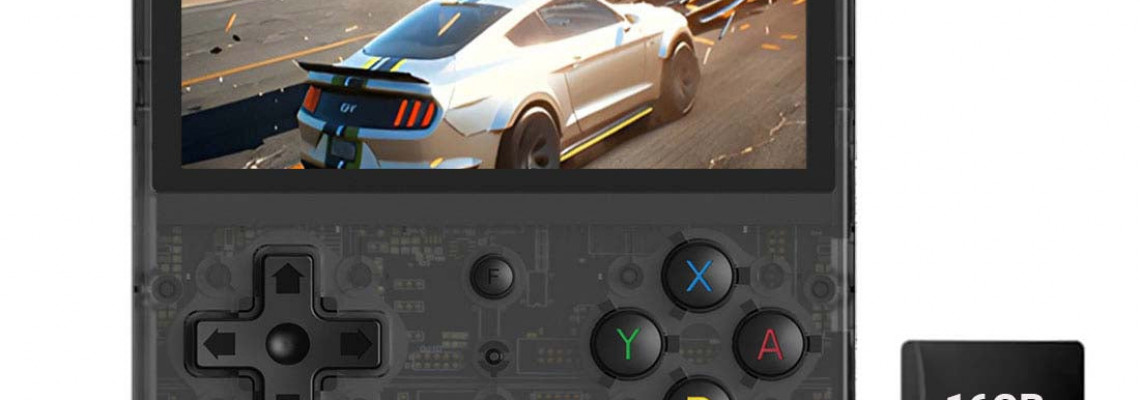
Sync Saves for Retro Games on Android Guide
Disclaimer
Note that this does not apply to Linux devices. Many people use Syncthing for them, but it's just not for me, so this guide is for Android only.
For myself, especially since I get many different devices throughout the year for review and setup, having an easy way to set them up and access my saves quickly is invaluable. But many of you like me out there, so let me show you how I do it.
Plus, this syncs Dolphin saves, NetherSX2 saves, and Yuzu saves, and everything is hidden behind Android's scoped storage, so you're going to want this. The previous app I used to sync saves didn't allow Dolphin saves or these others to work, but this does.
Backup your Saves
I must warn you now, but a lot can go wrong because we're talking about saves. If you want to do this, back up your savings somewhere else. Although it's different because I know what I'm doing and haven't lost a save yet, we'll take the simple route in this tutorial.
Click here to find all your saves in advance so you can back them up. Once you know the route, backing up your files is as easy as connecting your device to your PC via USB and copying the files over.
Finally, this tutorial focuses on cloud synchronization rather than local synchronizing. In other words, I'll use Google Drive to sync to your preferred cloud provider. Being able to sync when I'm not at home was a crucial feature for me in a synchronizing tool, and this one is ideal because it works everywhere in the world. This implies that, like me, who have numerous Android devices, they all work in perfect harmony with one another and the cloud, enabling me to pick up and play the same game and save from one device to another.
Preparation
There are a few things that need to be done in advance. First and foremost, make sure that your emulators are already installed. Ideally, you should have some saves already. Second, set things up using your primary device first. Use your primary devices for the first setup, but I'll walk you through adding more devices to sync everything afterward.
Download and setup FolderSync
Okay, let's get started. First, download the FolderSync app from the Google Play Store. Then open it.
Accept the conditions and the privacy statement.
You must now provide it access to your device's permissions. To provide access, click each.
You can skip locations in the background unless you want to sync saves on specific WiFi networks. For 99 percent of you, ignore this.
Click Finish once your checkmarks are green, and the main folder sync screen will appear.
Syncing RetroArch Saves
Since RetroArch is the emulator that everyone has and wants to sync, we'll start by syncing it. RetroArch is now marked with a giant asterisk, and both save and states are synchronized. The asterisk is more minor for saves, but suppose you have one RetroArch core for a system on one device and another RetroArch core for a system on the other, and they both save in different file formats. It won't function when you sync; neither device will be able to access that Save. Additionally, the same applies to save states.
Although there are a few options available, I personally use the same RetroArch cores on all of my Android handhelds—in fact, all of my handhelds, not just Android ones—and you can find a list of them here. I would strongly recommend it because there will be no problems syncing saves and states, and I have never seen any issues transferring across different devices in this manner.
First, let's work on RetroArch Saves, which synchronizes your actual in-game saves.
In FolderSync, click Create folderPair in the lower right corner.
I'll call it RA Saves, so feel free to give it a name. Next, keep Sync v2 selected.
Send saves to the cloud.
We must now instruct the device on syncing, the first significant decision. Ultimately, we will employ two-way, meaning that files remain identical on the device and in the cloud in Sync. But we must move our saves to the cloud because we need them. We want the option for the correct folder for our initial setup, so choose that and then next.
We now have to select our folders, and while the left folder is local—that is, the device's folders—they should have labeled them more clearly. Your cloud drives folder is in the correct folder.
You want to go to your internal storage/RetroArch/saves folder and choose it, so click select folder. If you have previously visited my website, that is the route to your RetroArch saves.
After scrolling down to the correct folder, click SD card and add the account. You should now choose your cloud provider. As I previously indicated, I'll be utilizing Google Drive. After logging in to your cloud service, click Test to ensure it functions. When finished, click the back arrow.
Press the SD card again after selecting Google Drive or another cloud service. Next, Choose a folder. You can now choose where you wish to save your games after seeing the folders you have on your cloud account. For simplicity's sake, I'll make a folder called Saves. Additionally, I will make a RetroArch Saves folder called RA Saves inside of that folder. Click on that folder, then choose the bottom right option.
Then proceed by selecting Next. Next, select Save.
First Sync
The folder pair syncing screen is now displayed. Thus far, we have just stated that we would like to move every file in the RetroArch Saves folder to the RA Saves folder for our cloud services. But let's do it since it hasn't done so yet. On the left, click the Sync button.
This could take a while, depending on how many saves you have.
This screen will not display much information while the Sync is taking place, so wait for it to be finished before clicking the back arrow in the upper left corner. Next, select History. You will observe precisely what has synchronized. If you click the Plus icon, you can see more details about what you accomplished. Additionally, this screen will inform you of any issues.
Change to two-way Sync.
To return to our previous location, click the folder icon and select our folder pair. We may now choose Two-way as the sync type because the files in our device and cloud directories are identical. Any modifications you make to your files, locally or in the cloud, will be synchronized after you accomplish this. This is precisely what we want, mainly if we include additional devices. If you click sync once more, nothing should change.
FolderPair Settings
Let's now examine some possibilities for this Sync. I activate sync removals, which means that if I remove a file or save it on one end, it also removes it from the others. To do this, click the sync settings in the upper right corner—individual choice.
We must instruct Foldersync on how to resolve conflicts if you scroll down. For instance, you saved a game offline on one device and neglected to connect to WiFi. Then, you want to play the same game on another device and save it. Now that you have two saves with different timestamps, everything is out of Sync, even though the first device will wish to sync when it reconnects to WiFi. What would you like to do then? I overwrite the oldest save myself, which hasn't caused any problems.
Scheduling
Let's move on to the best feature. Since our syncing is manual and requires us to press the Sync button, we can only enable the Instant Sync option if we allow scheduling. We don't want that because our time is vital.
Select the Schedule button after selecting the Scheduling tab. I'll refer to it as Sync.
To make the first checkbox the default, click it. The next step is to choose how frequently you wish to sync your saves. Depending on your device, this can affect battery life, and how often you want to sync will depend on your preferences, but I'll show you why you may leave it at 12 hours.
You can add settings here, such as whether to sync only on WiFi when charging or on specific WiFi networks. Go to the Connection tab.
Do you want to know when your syncing is complete, whether there were any issues, and other details in the Notifications tab? My personal preference is to enable show errors for all of these. Click Save after that.
It will now attempt to sync every twelve hours, and it is entirely automated, which is fantastic. However, I want to avoid returning here and manually pressing the Sync button if we wish to switch between devices before those twelve hours.
Instant Sync
Return to the FolderPair Sync Options tab to utilize the instant sync option. If I choose Instant Sync, any changes I make to my folders will be instantly synced, which is my favorite feature.
For instance, if I start a game and decide later that I want to save it, you can see that Foldersync immediately transfers our Save when you examine Foldersync's History. It didn't wait twelve hours; it did it for us immediately, which is excellent since you could save, switch off your device, go to another handheld, and continue playing from the same Save in seconds.
Syncing RetroArch States
Now that I've demonstrated every step, picture that the following folders and emulators you need to sync follow similar procedures as the ones we just completed. After syncing to the correct folder, switching to two-way, and turning on the parameters we created for every folder pair, set up as many folder syncs as you like. I'll do RetroArch States shortly.
The internal storage/RetroArch/States subdirectory contains the RetroArch States.
I made a folder called RA States in Google Drive.
After selecting the appropriate folder for synchronization and clicking Sync, all my data is sent to the cloud.
Turn on two-way synchronization
Modify the immediate Sync, scheduling, and other options.
We are ready to add more emulators or other devices since all our saves and states have flawlessly synchronized from the device to the cloud. As I previously mentioned, follow all of these identical procedures, but if you're curious about the paths to save files from different emulators, go here. At this point, that's all you need to know. You can use as many emulators as possible if you follow the steps we just described.
Adding other devices
The difficulty now is, however, how to incorporate another gadget into this mix. I connected in my Odin 2 after you finished setting up all of your synchronization, and as you can see, I'm syncing my GameCube, PPSSPP, RetroArch, and Wii. For instance, you may have more if you're syncing Yuzu and NetherSX2, both of which are functional. However, you have all of your syncs set up on your primary device, and since you recently purchased a new portable device, let's include it in the mix.
Making a backup of everything we did here and restoring it on a different device is the simplest method. On the main FolderSync screen, click the hamburger menu in the bottom left corner. Scroll down to Settings and choose Backup. After selecting the Backup folder, select the Download folder. Next, choose Backup database. Don't include a password. Now launch your preferred file manager; Solid Explorer is my top pick. The folder sync db zip file should be located in the internal storage/Download folder. Transfer this zip file to the new device you wish to begin syncing. There are countless ways to accomplish this following step.
You can either email it or use a USB to copy it to your PC before doing the same with the new device. Take it from the new device and upload it to the cloud. Choose a method and transfer the file to the new device. I connect via USB and proceed in that manner.
Setting up another device
Now that the zip file is on the new device, let's install Foldersync from the Google Play Store. Accept the terms and privacy policy, grant all permissions, and approve our previous actions.
Go to the zip file we moved over, then choose it from the main screen's hamburger menu under Settings, Backup, and Restore database. Restart the application. If you click the folder icon, all your folder pairs will be visible and ready for syncing.
Turn off scheduling
Now that this is crucial, go into each of them and briefly turn off schedules. We have two-way Sync enabled and recently added a new device, which probably had saves on it unless it was brand-new right out of the box. It will be a catastrophe if we let these all Sync; we don't want the saves from this device and the cloud flying everywhere.
Are there any saves you would like to keep on this new device? You may have a Pokemon Blue save if you played Pokemon Blue on this device but not the other. I prefer to manually upload the saves to the cloud folders after backing up the device's files to your computer via USB. Now that you know all the save paths for every emulator, this should be simple. To pull all your cloud saves to this new device and sync them, we want your save folders on this new device to be empty.
Download saves from the cloud.
Previously, we selected the appropriate folder to transfer our device's saved files to the cloud, but this time, we wanted to transfer the files from the cloud to the device. If you have a device without any saves, back up all the saves and empty the saves folder for any emulators you wish to sync. Let's go on if you are sitting there looking at the screen.
Once more, let's begin with RA Saves. Additionally, confirm that the RA Saves folder is empty. Change the folder pair settings from two-way to the left folder. Feel free to click "synch." Check your file manager to make sure they're all there. Enable scheduling and switch it to two-way, and you're done.
Rinse and repeat for each additional folder pair. I'm syncing my RA States folder because it's empty locally.
When synchronizing, you may encounter an odd glitch where you see a red error that reads "Folder not found," even if you know the folder is correct. It's just a strange bug when importing a database as we did; pick the left account folder on the folder pair page, remap it, and then sync again. As you can see, I have experience in both PPSSPP States and Saves.
